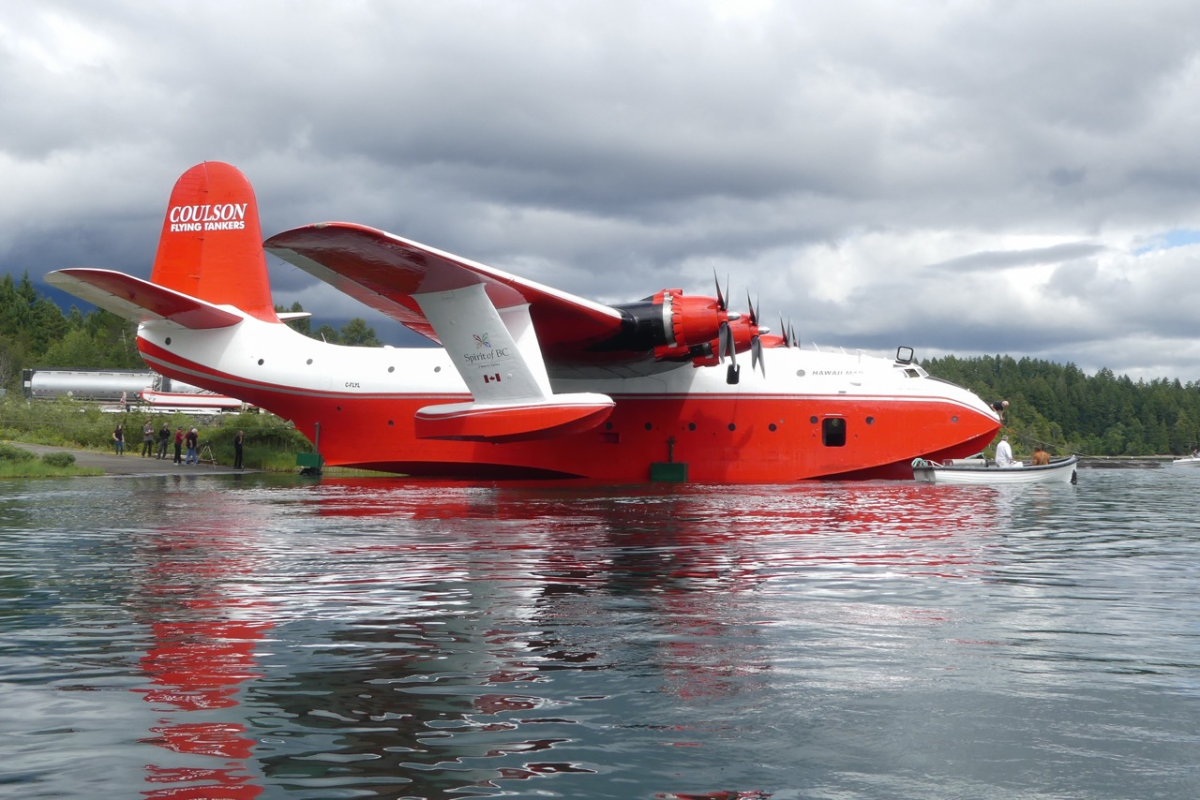Have $5 million and a burning desire to own the world’s largest flying water bomber?

The iconic Hawaii Mars, known for its years of fighting British Columbia’s wildfires, is on the market with a seven-figure price tag, according to aviation broker Platinum Fighter Sales.
The listing for the 1945 Martin JRM-3 Mars lists its interior and exterior as in 9 out of 10 condition, and says it last underwent annual flight inspections in 2016.
“Will be sold with current Annual at the asking price, ‘As Is Where Is,” the listing states.
The massive aircraft — which has the wingspan of a Boeing 747 — was conceived as a patrol bomber during the Second World War, where it became the largest flying boat to enter Allied service, and was soon repurposed as a transport aircraft.
Just five of the aircraft were built by manufacturer Martin — just two of which remain today, the Hawaii Mars and the Philippine Mars, both owned by Coulson Aviation and stored at Sproat Lake on Vancouver Island.
Post-war, they were reconverted again in the 1950s to become firefighting aircraft with an impressive payload: the capacity to carry up to 27,000 litres of water.
While there are calls from some members of B.C.’s public to bring the aircraft back into service every wildfire season, they have fallen out of favour with the province.
The massive aircraft fought its last B.C. wildfire in 2016, when it served a 30-day contract with the provincial government.
The BC Wildfire Service has shifted its focus to smaller, more nimble aircraft capable of landing in up to 1,700 bodies of water around B.C.
The Hawaii Mars, due to its massive size, is only capable of landing in 113.
Officials have cited other operational reasons, such as the need to clear personnel from the ground in drop zones, along with cost, for moving away from the Mars.

Owner Wayne Coulson has disputed the province’s statistics on where the Mars could take water from before dropping it onto a fire.
Of the two remaining Martin Mars bombers, only Hawaii Mars remains airworthy, according to Platinum Fighter Sales.
Coulson Aviation listed the Hawaii Mars for sale for $3 million in 2016.
“The fire agency in British Columbia doesn’t see, you know, continued use for the aircraft. So we have to reinvent them something different than what they are,” Coulson said at the time.
Coulson Aviation had previously intended to place its sister aircraft, the Philippine Mars, in a U.S. aviation museum, a plan that saw the aircraft repainted in U.S. Air Force colours before the deal hit a snag in 2016 and was put on hold.
Global News has reached out to Coulson Aviation for an interview on the sale.





Comments